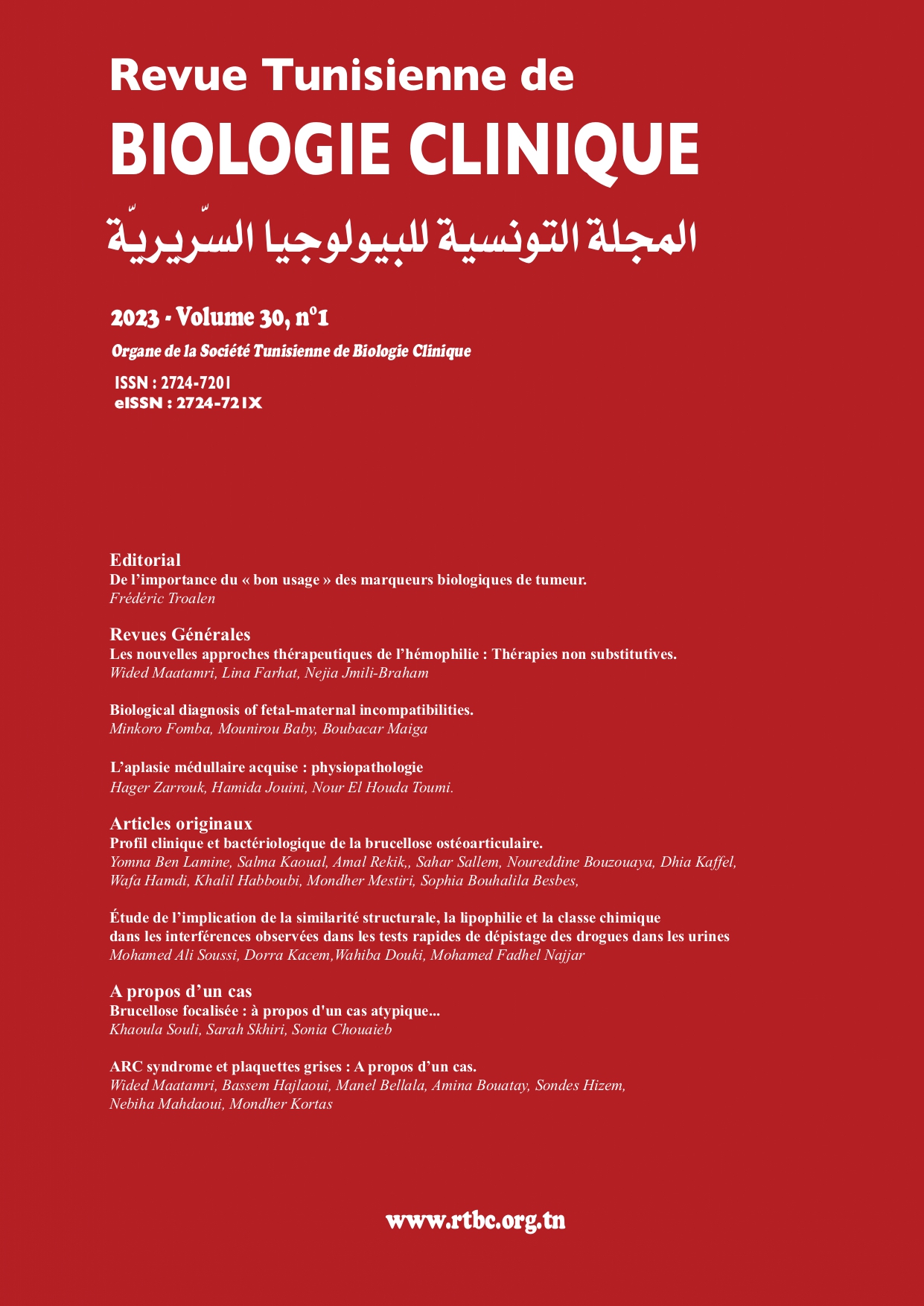Abstract
Introduction: Fetal-maternal incompatibilities result from a series of phenomena related to the introduction of a foreign antigen into the maternal circulation. The severity of the attack is due to immune-haemolysis resulting in the occurrence of fetal anaemia and/or neonatal anaemia. The diagnosis of fetal-maternal incompatibilities is mainly based on the identification of irregular agglutinins and the titration/assay of antibodies. Objective: In this literature review, we summarize the current knowledge on the main methods for exploring fetal-maternal incompatibilities. We present the advantages and disadvantages of each method in order to improve our knowledge of the diagnosis and follow-up of fetal-maternal incompatibilities. Methods: We analysed the medical literature and published studies on the topic of fetal-maternal incompatibilities. The sites consulted are PubMed, Transfusion, Elsevier and CNHRHP. The key words used during our research are “irregular antibody research”, “weight assay”, “flow cytometry”, and “Kleihauer test”. Conclusion: Diagnosis of fetal-maternal incompatibilities should be made during pregnancy. This is based on compliance with the monitoring schedule for irregular agglutinins. In addition, the technique of genotyping fetal blood groups on maternal blood has revolutionized the diagnosis of fetal-maternal incompatibilities. The diagnosis of fetal-maternal incompatibilities and the success of their management are based on cooperation and multidisciplinary dialogue between biologists, obstetricians and neonatologists.

This work is licensed under a Creative Commons Attribution 4.0 International License.
Copyright (c) 2023 Revue Tunisienne de BIOLOGIE CLINIQUE

